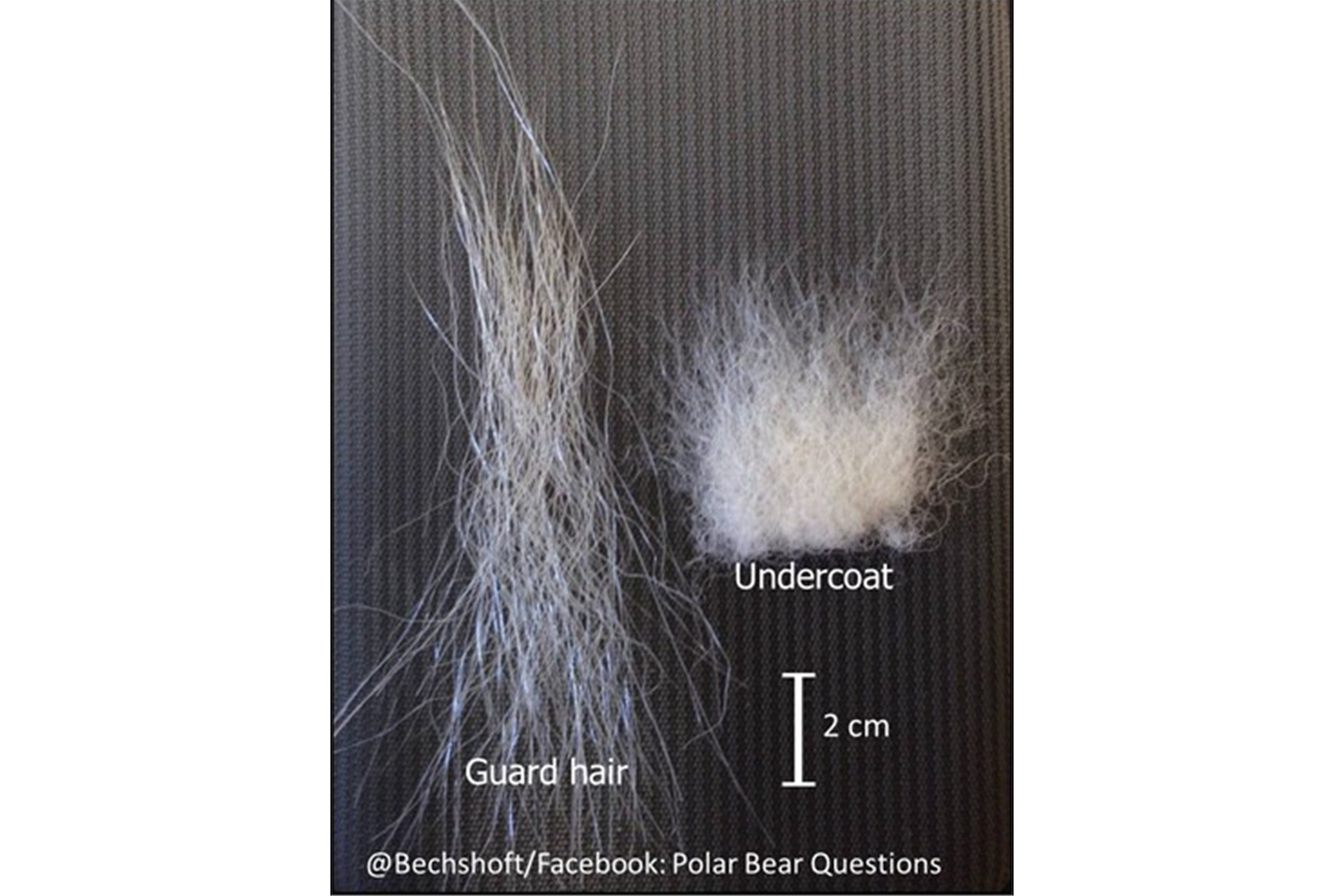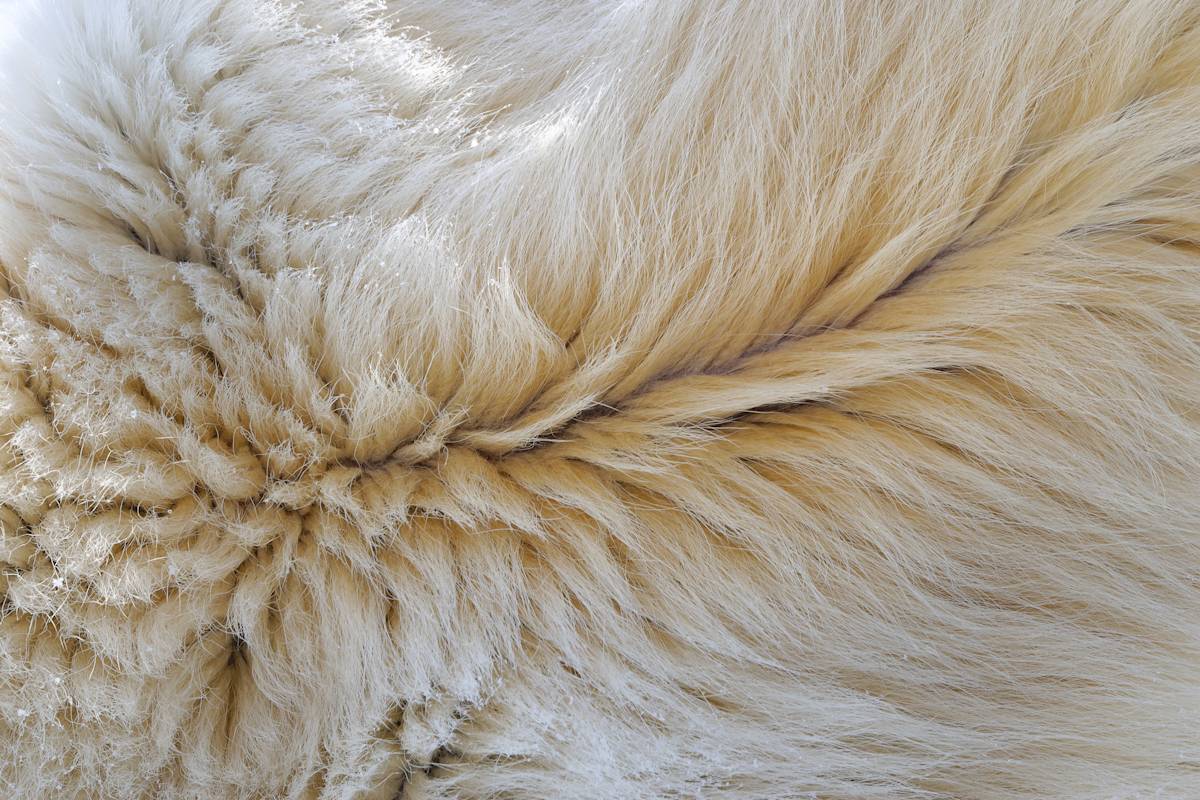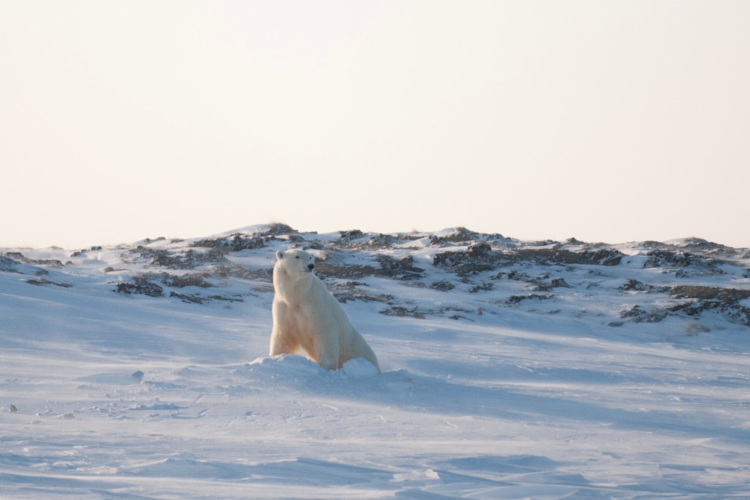Polar Bear Questions
We’re back with our Polar Bear Questions series, this time with a question from Sharon: “I would love to know how polar bear fur feels ... if it is soft or coarse. My life’s dream is to touch a polar bear, but that may never happen, so perhaps at least you can answer this puzzling question for me. I am guessing the hair is on the coarse side?”
A: Well, Sharon, I’d have to say yes and no on the coarseness—you see, polar bear fur is actually made up of two types of hair: guard hairs and an undercoat. As you can see in the picture below, the guard hairs are longer (approximately 10 centimeters) than the undercoat (approximately 4 centimeters). The guard hairs are straight and have a wiry, coarser feel to them, while the undercoat is wavy and much softer. With regards to how the two feel, I would say it’s a bit like the difference between a cat’s hair and its whiskers.
The two types of hair also play different roles: the undercoat is the woolen sweater that keeps the bear warm, while the guard hairs act as a jacket, protecting the finer undercoat and ultimately the bear’s skin from the environment (sun, ice, rain).

If you look at a cross-section of a polar bear pelt, you can see that the guard hairs are longer and actually cover the undercoat. Both types of hair are pigment-free and transparent with a mostly hollow, air-filled core. This makes the light scatter as each hair strand reflects the visible light, thus making the polar bear appear white to you and me. Polar bears rarely look completely snow white though - but if they do it’s likely to be right after their yearly molt.
The rest of the year you can often see bears in various shades of yellow (oil from seal fat or whale carcasses) or black or brown (from dirt if they’ve been on land for a longer period of time). Polar bears that are kept in captivity in more humid parts of the world can even get a green tinge to them, a result of algae growing inside the hollow hair—usually this can be relatively easily “cured” by soaking the bears repeatedly in saltwater.
Our color perception of the bear also depends on things such as the angle of the sun/time of day and cloudiness. In the right light, they will appear almost orange and thus are very easy to spot if you happen to be out on the sea ice—that is, tracking polar bears from a helicopter.
Dr. Thea Bechshoft is a polar bear scientist based in Aarhus, Denmark. She is the author of the popular Polar Bear Questions page on Facebook, republished here with permission.

















